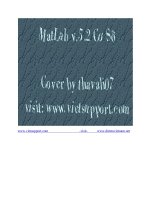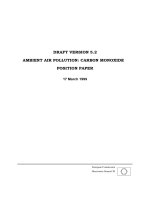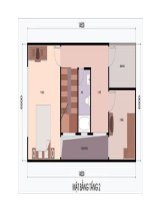5 2 PDM mechanical components
Bạn đang xem bản rút gọn của tài liệu. Xem và tải ngay bản đầy đủ của tài liệu tại đây (1014.71 KB, 15 trang )
Positive displacement
motors
At the end of this lecture, YOU will be able to:
1.
Name the 4 major components of a PDM tool.
2.
Explain the components of a PDM power section.
3.
List the components of a PDM drive line system
4. Name the 2 types of PDM bearing sections and state when
each should be used
5. List the operational considerations for using PDM tools.
COPYRIGHT © 2001,
All Rights Reserved
Down Hole Motor
Any mud motor consists of 4 basic
parts:
1.
Dump Valve Assembly
2.
Power Section
3.
Drive Train Assembly
4.
Bearing Assembly.
COPYRIGHT © 2001,
All Rights Reserved
1 - Dump valve assembly
Allows the mud to fill or
drain from the drill-string
while tripping.
The motor will function
perfectly without a dump
valve. However, it allows
the drill string to fill on the
trip in and to be pulled
"dry".
COPYRIGHT © 2001,
All Rights Reserved
2 - Power section
The rotor has spiral-helix shape.
The stator is a steel housing, lined
with elastomer rubber compound.
The rotor is produced with matching
'lobe" profile and similar helical
pitch to the stator, but with one lobe
less.
When assembled, the rotor and
stator form a continuous seal along
their matching contact points.
COPYRIGHT © 2001,
All Rights Reserved
2 - Power section
Fluid is pumped into the motor's
progressive cavities.
The force of the fluid movement
causes the shaft to rotate within the
stator
The rotational force is then
transmitted through the connecting
rod and drive shaft to the bit.
COPYRIGHT © 2001,
All Rights Reserved
2 - Power section
Each complete spiral of the stator is
called a stage.
Interference fit between rotor O.D.
and stator I.D. controls motor power.
Mud motors are divided into slow,
medium and high speed types by
changing the shape and the number of
the stages and by the number of "lobes"
and resultant cavities of the stator.
The greater the number of lobes, the
higher the motor torque and the lower
the RPM.
COPYRIGHT © 2001,
All Rights Reserved
Torque and RPM output Comparison
COPYRIGHT © 2001,
All Rights Reserved
3 –Drive Train Assembly
Transmits rotational speed and torque from power section to
the bearing and drive shaft.
Compensates eccentric rotation of the rotor and absorbs its
down thrust.
COPYRIGHT © 2001,
All Rights Reserved
4 - Bearing section
COPYRIGHT © 2001,
All Rights Reserved
4 - Bearing section
Off-bottom
Thrust Bearings:
support the hydraulic thrust and
weight of the internal
components when the tool is off
bottom. They are normally ball
bearing type design.
On-bottom
Thrust Bearings:
transmit the drilling load from the
non-rotating motor housing to the
rotating drill bit. These bearings
take the load while drilling.
Bearing loads must be balanced
COPYRIGHT © 2001,
All Rights Reserved
4 – Sealed Bearing
Section
Has on bottom, off bottom and radial bearings.
Has journal bearings for axial load instead of
roller.
Journal bearings lay in a sealed oil bath for cooling.
No drilling fluid is diverted through the bearing section for
cooling.
Less journal axial load bearings needed.
Ability to produce shorter bit to bend lengths.
Heat sensitive
Expensive bearing section to repair.
COPYRIGHT © 2001,
All Rights Reserved
Selection Criteria for a
Bearing Section
WOB.
Down hole Temperature.
Drilling Fluids solid content.
Type of drilling fluid used.
Build rates needed.
Hole section bearing pack is going to be used in.
Anticipated down hole bit side loads.
COPYRIGHT © 2001,
All Rights Reserved
Selection Criteria for a Power
Section
Type of bit being used and formation type.
Down hole Temperature.
Drilling Fluids solid content.
Type of drilling fluid used.
Build rates needed.
Hole section power pack is going to be used in.
Hydraulics needed to clean the hole.
Type of guidance system used, if needed.
COPYRIGHT © 2001,
All Rights Reserved
Positive displacement motors
Now, YOU should be able to:
1.
Name the 4 major components of a PDM tool.
2.
Explain the components of a PDM power section.
3.
List the components of a PDM drive line system
4. Name the 2 types of PDM bearing sections and state
when each should be used
5. List the operational considerations for using PDM tools.
COPYRIGHT © 2001,
All Rights Reserved
Any questions before
the test?
This is a closed book test. Please put
away your notes and handouts now.
COPYRIGHT © 2001,
All Rights Reserved









